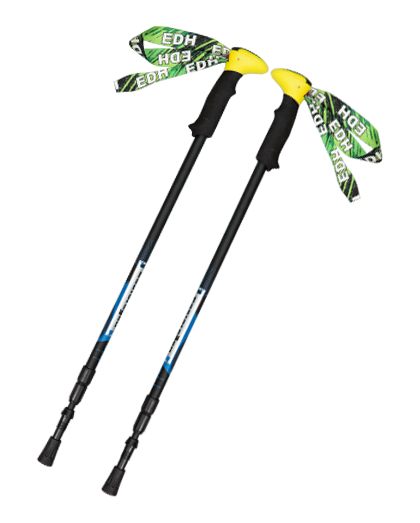

Trekking poles used in mountain climbing are generally lightweight but strong. They were invented to provide support in times of an emergency by minimizing the force with which one is carrying their weight. These are often made of nylon with a webbed surface on one end. They are designed for strength and longevity, so that they are durable enough to withstand many attempts at misfortune. In order to make sure that the poles last longer, they are usually coated with extra polyurethane or powder coatings.
But what exactly makes trekking poles different from other backpacking products? First of all, they are more flexible. When you are trekking, your body takes a lot of different breaks, and even your extremities such as your hands and feet need time to recuperate from the exertion. A hinged pole is designed to give the user maximum flexibility while preserving their strength. Another difference is that you can easily break a trekking pole when it is in use, whereas you cannot do this with other backpacks.
These poles are also stronger than most other backpacking items. You have to try them out before you buy them, but one thing that will be obvious is that the heavier the load, the stronger the pole needs to be. They also tend to be heavier than traditional poles, but this adds to the comfort and ease-of-use.
What about cross-country poles? Well, these are not very flexible because they are designed to keep the weight of the user (which they are holding) to a minimum. On the other hand, they are strong and sturdy enough to hold light loads. If you do not want to carry your own weight, then a pole is ideal, but if you think you might lose some flexibility while trekking, then cross-country poles are much better.
One last example: when it comes to the actual use of trekking poles, you should know that there is no such thing as a one-size-fits-all type of poles. Each person has to get special poles specifically designed for their bodies. So, the difference between trekking poles and cross-country poles can be narrowed down to two main categories: strength and flexibility.
The strength of a pole is determined by the material used in its core. Stronger poles are usually made from carbon fiber, whereas those made from aluminum are less expensive and lighter. The flexibility of a pole is often determined by the material (polyethylene, graphite, etc.) used in its core. Those made from polyethylene are known for being the most flexible, while aluminum poles are stiffer and wear longer.
